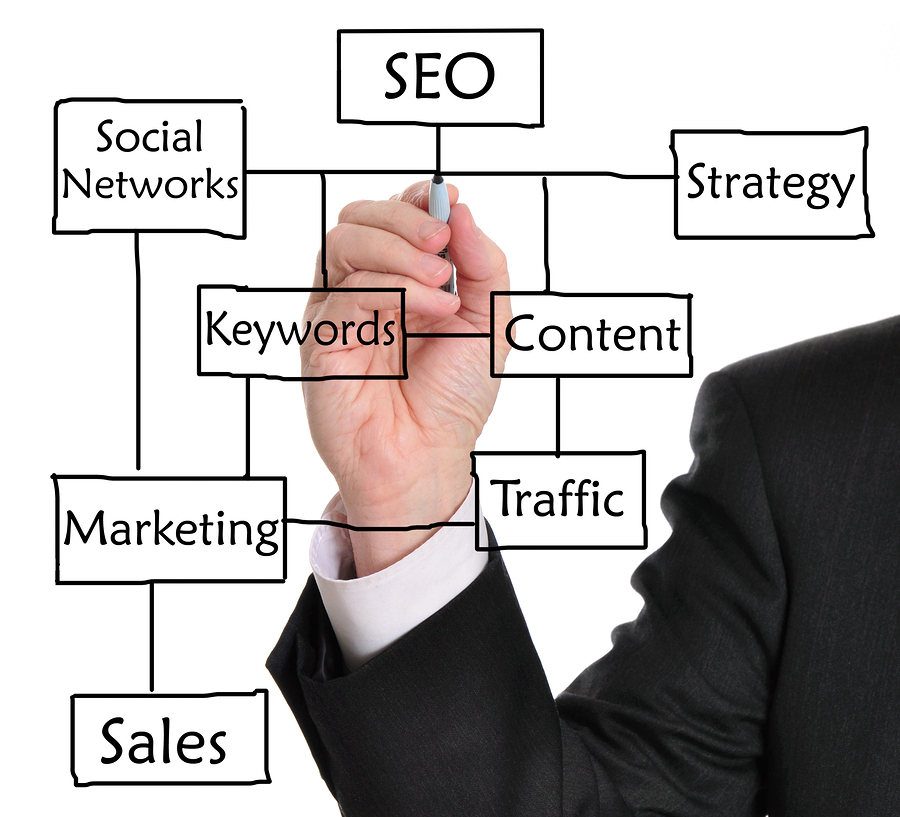Inbound vs. outbound marketing: What's the difference?
Most marketing initiatives fall into one of two categories: inbound and outbound. Both strategies incorporate similar goals, but they require vastly...

Inbound marketing has gained a loyal following among businesses over the past few years -- and for good reason.
It's an alternative strategy to traditional marketing and advertising tactics that have lost relevancy as people have changed the ways they consume media.
Far more than generations of the past, modern consumers now have greater control over the media that they read, watch, and interact with. Consumers have endless choices that allow them to determine when and how they access news, entertainment, and other materials.
Members of your target audience are reading articles on their smartphones, watching videos on Facebook Live, binge-watching their favorite programs on Netflix, and using many other applications and platforms that give them the content they want on their own terms.
With so many available options and the added ability for consumers to tune out the content they don’t want to see, how are marketers supposed to get their messages to their audience?
The answer lies in creating content that will interest consumers. No longer can brands toss up a billboard or a television ad and expect their audience to take notice. Marketers need to develop engaging stories and messages that will draw their audience in and provide value. That’s where inbound marketing can help.
 Today, consumers carry the internet with them. Make sure your messages
Today, consumers carry the internet with them. Make sure your messages
are reaching them where they hang out. ![]()
Inbound marketing practices focus on attracting and creating relationships with consumers. The goal isn't to spray your message as far and wide as possible -- which has often been the goal of traditional marketing techniques -- but to reserve your communications for the people who are most likely to become customers if you offer the right amount of value.
Inbound marketing helps you to identify and understand the habits and needs of your ideal consumers. Do they prefer to get their news and information from Twitter? Do they read blog posts on the latest trends in their industry? Do they prefer how-to guides and helpful templates that can help them improve their processes and skills?
By researching and coming to a thorough understanding of what your audience wants and needs, you can build resources and tailor your messages in ways that will give consumers added value. Inbound marketing doesn’t revolve around pushing your product or services (that’s often secondary in this approach), instead it focuses on establishing your brand as an important resource that consumers can turn to for insider knowledge, useful tools, fun and engaging commentary, and a much deeper brand-customer relationship.
While many inbound techniques leverage the accessibility of digital strategies and resources, inbound marketing isn’t just about transitioning to online approaches. Inbound marketing involves cultivating a system that includes analytics, customer relationship management, content creation and distribution, social media activity, and personalized email marketing. Ultimately, using inbound methods will allow you to create connections with consumers that cultivate brand loyalty and awareness.
>> Learn more about establishing your own inbound marketing plan. Get your free copy of our B2B Guide to Inbound Marketing.
Inbound marketing is an effective approach for both online businesses and traditional brick-and-mortar stores.
For instance, an inbound marketing campaign might involve sending coupons or discount codes via social media. Consumers can access that information from their smartphones while shopping in a physical store. Inbound addresses the issues that face businesses which operate both online and in the offline world.
By leveraging the effectiveness of content marketing, search engine marketing, social media efforts, and other strategies, inbound marketing is able to attract potential customers to your business. You then use tools like calls-to-action and compelling USPs (unique selling propositions) to turn those prospects into customers.
After your leads become customers, you want to continually offer compelling content and excellent customer service to retain them for the future. By developing useful email campaigns, thoughtful and timely blog posts, and engaging social media interactions, inbound marketing can help your brand maintain strong relationships with your customers.
It may sound simple, but inbound marketing does include a lot of moving parts. The following are some of the key components of a successful inbound marketing campaign:
Creating buyer personas: Before launching your campaign, make sure you have a comprehensive understanding of your ideal customers in order to shape strategies and tactics to meet their needs. Buyer personas help you create an image of your best customer and then use that image to tailor strategies that will help build stronger customer relationships.
A responsive, growth-driven website: Your website is the foundation of your marketing. You want to make sure it looks great on mobile devices and follows a growth-driven design approach that allows you to use data and user feedback to make consistent upgrades to your website.
A well-planned content strategy: Create engaging and thorough on-site content (like a blog) and stay committed to updating your website frequently with new posts. Complement blog articles with eBooks, how-to guides, infographics and other materials to offer even more value to visitors.
Social media marketing tools: Your ideal customers are likely using at least one social media platform or another to connect with friends, family, and professional contacts. So it makes sense for you to meet them where they spend their time. Share your blog posts, downloads, videos, infographics and other content on social media in order to reach a wider engaged audience.
 Inbound marketing covers numerous initiatives, from search engine optimization (SEO) and customer relationship management to social networking and calls-to-action.
Inbound marketing covers numerous initiatives, from search engine optimization (SEO) and customer relationship management to social networking and calls-to-action. ![]()
The biggest asset you gain with an inbound marketing approach is the ability to view your customers as people. They aren't just dollar signs or entries on a spreadsheet; they have goals, desires, needs, and opinions.
An inbound strategy benefits all types of businesses because it drives connection. When you make real connections with your leads, you gain loyal patrons who will continue to buy your products and services because of your commitment to them.
Want to learn more about how B2B companies can use inbound marketing techniques to attract more leads and build better connections with their audience? Get your free copy of our eGuide: The B2B Guide to Inbound Marketing.
Make sure to connect with us on LinkedIn to get valuable insight on the latest news in marketing and website design. Follow us here:

Most marketing initiatives fall into one of two categories: inbound and outbound. Both strategies incorporate similar goals, but they require vastly...

Humans are visual creatures, so when it comes to innovative marketing, that’s an important trait to try to tap into as much as possible. Here are a...

At one time, social media served as nothing more than a digital meeting place. Today, however, many people earn their living on Facebook and...